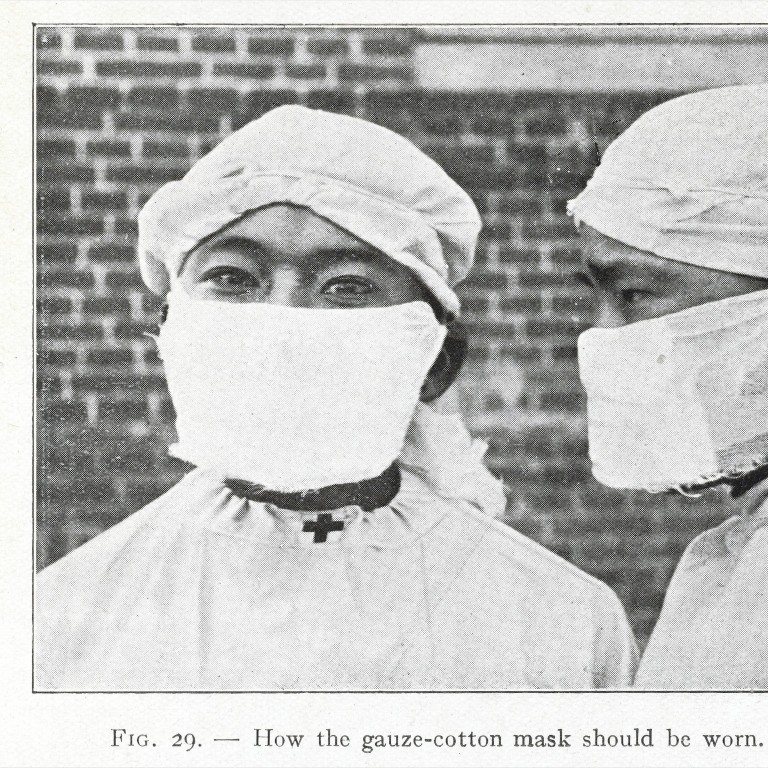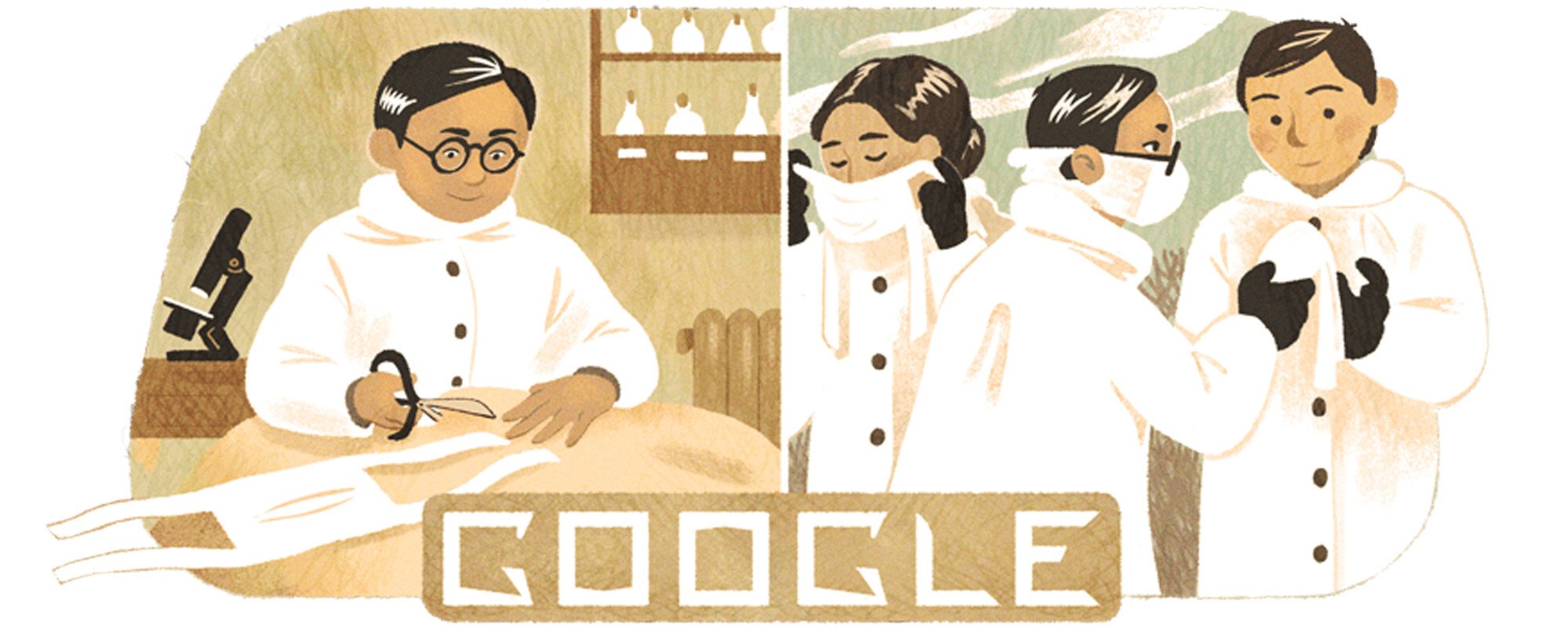
Google honours Chinese-Malaysian face mask pioneer Doctor Wu Lien-teh, whose surgical face covering is seen as origin of N95
- Google Doodle is an artistic alteration of the logo on Google’s homepages on special dates to commemorate holidays, events, and notable historical figures
- Other prominent Asians Google has celebrated include Anna May Wong, Masako Katsura, and Salom
Wu invented the surgical face mask, considered to be the precursor to the N95 mask in response to the Manchurian plague which spread in northwestern China in 1910, according to a biography on Google’s website.

“Wear a mask. Save lives,” the latest Google Doodle wrote on its page.
Two years after his appointment in 1908 as vice director for China’s Imperial Army Medical College, Wu was appointed by the Chinese government to investigate the then unknown plague that had spread from human to human through respiratory transmission.
Wu designed and produced a special surgical mask with cotton and gauze, adding several layers of cloth to filter inhalations. He advised people to wear his newly invented mask and restrict travel while also using progressive sterilisation techniques. The surgeon also worked with governments to establish quarantine stations and hospitals.
More than a century on, during the global Covid-19 pandemic, the medical community is advising the same precautions be taken.
When Wu was asked to investigate the plague, he was given broad authority over local doctors, police, the military and civil officials, Ling Woo Liu, one of Wu’s great-granddaughters, wrote for Post Magazine previously. As a result, within three months of his arrival into the affected area, the scholar and surgeon was able to end the outbreak in April 1911.

In 1915, he went on to found the Chinese Medical Association, the country’s largest and oldest non-governmental medical organisation.
Wu’s other great-granddaughter, Dr Shan Woo Liu, said in a statement on Google Doodle the family was honoured that Google was celebrating their great grandfather’s birthday.
“A year ago, I was terrified by how little we knew about the coronavirus. Even now, I struggle to imagine how my great-grandfather must have felt as he cared for patients who had contracted the plague,” she said.
“But I also feel closer to him than ever as I urge my patients to practice social distancing and to wear a mask — the very techniques he pioneered as he rescued China, and possibly the world, from a scourge.”

Wu was a pioneer in more ways than one. Born on March 10 in 1879 into a family of Chinese immigrants in Penang, Malaya (now known as Malaysia), he was the first student of Chinese descent to earn a medical degree from England’s Cambridge University.
In 1935, he became the first Malaysian — and the first person of Chinese descent — to be nominated for the Nobel Prize in Physiology or Medicine for his work to control the pneumonic plague.
Wu died in 1960 at the age of 80 and joins a long list of prominent Asians honoured by Google Doodle; Anna May Wong was the first Chinese-American movie star in Hollywood, Masako Katsura, a female Japanese billiards player known as “the First Lady of billiards” was the first woman to compete for an international billiards title and Salmah Ismail, better known as Saloma, who was a Singaporean-Malaysian singer, actor and fashion icon who shot to fame in the late 1950s.

.jpg?itok=H5_PTCSf&v=1700020945)